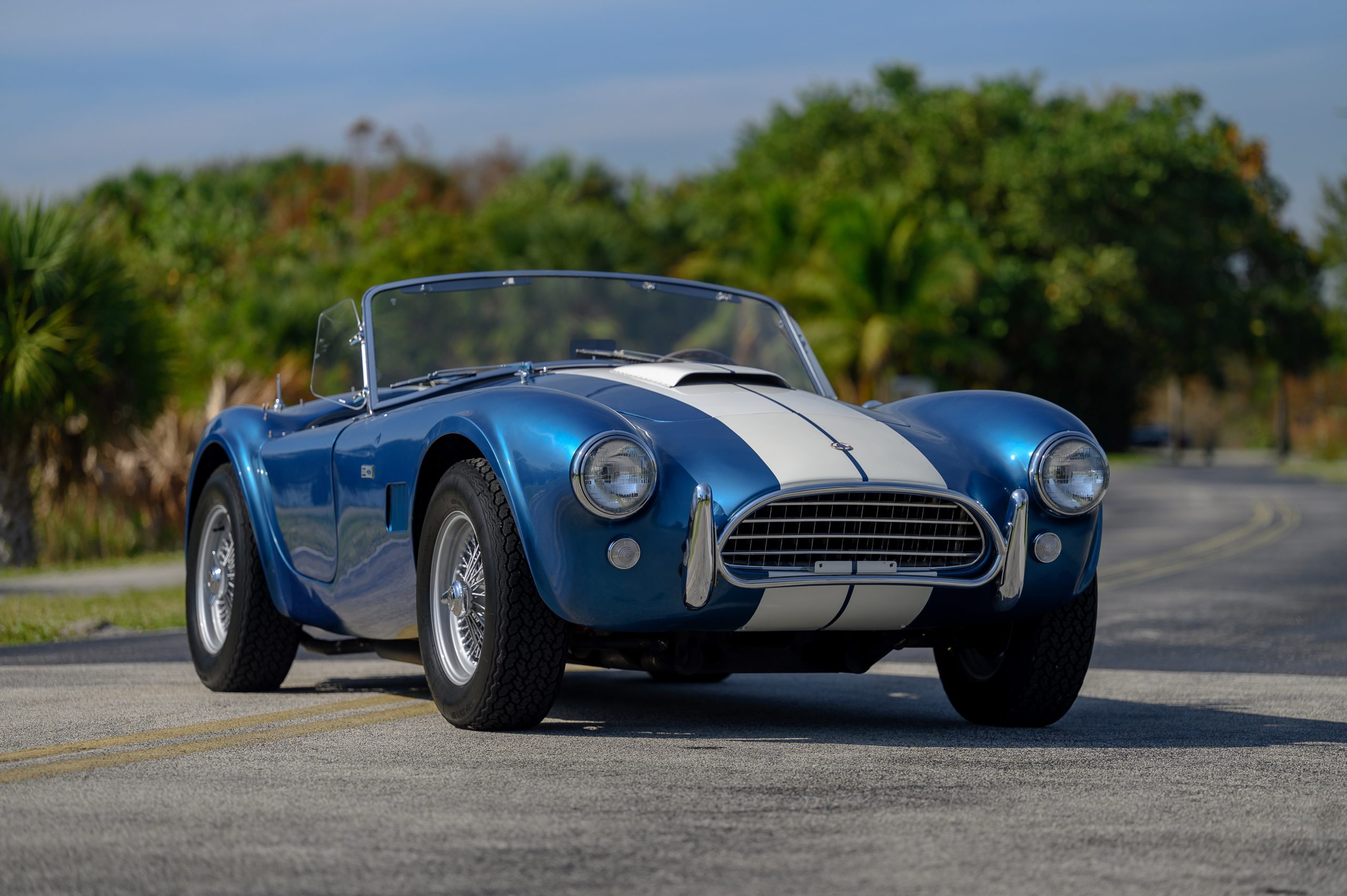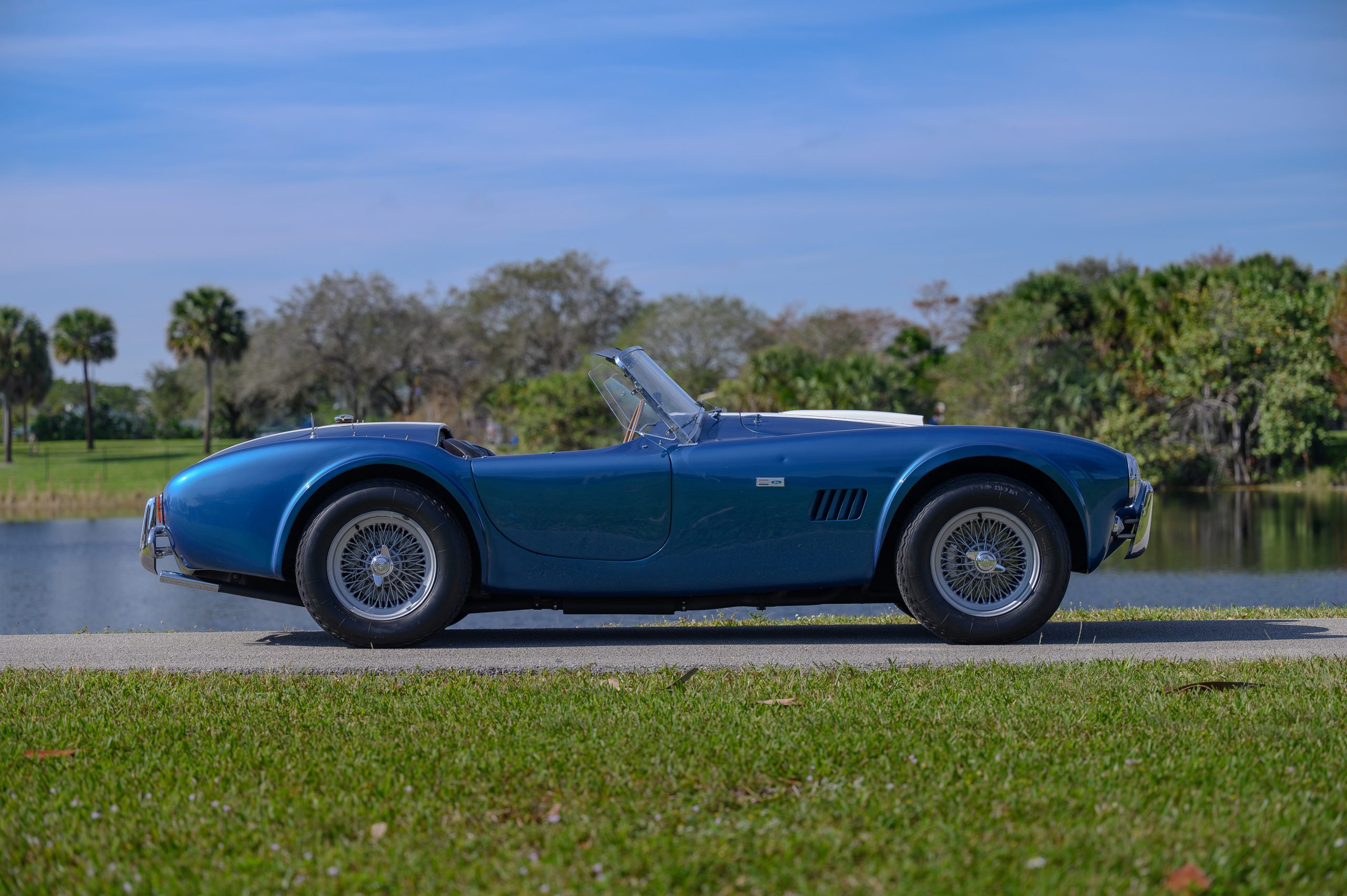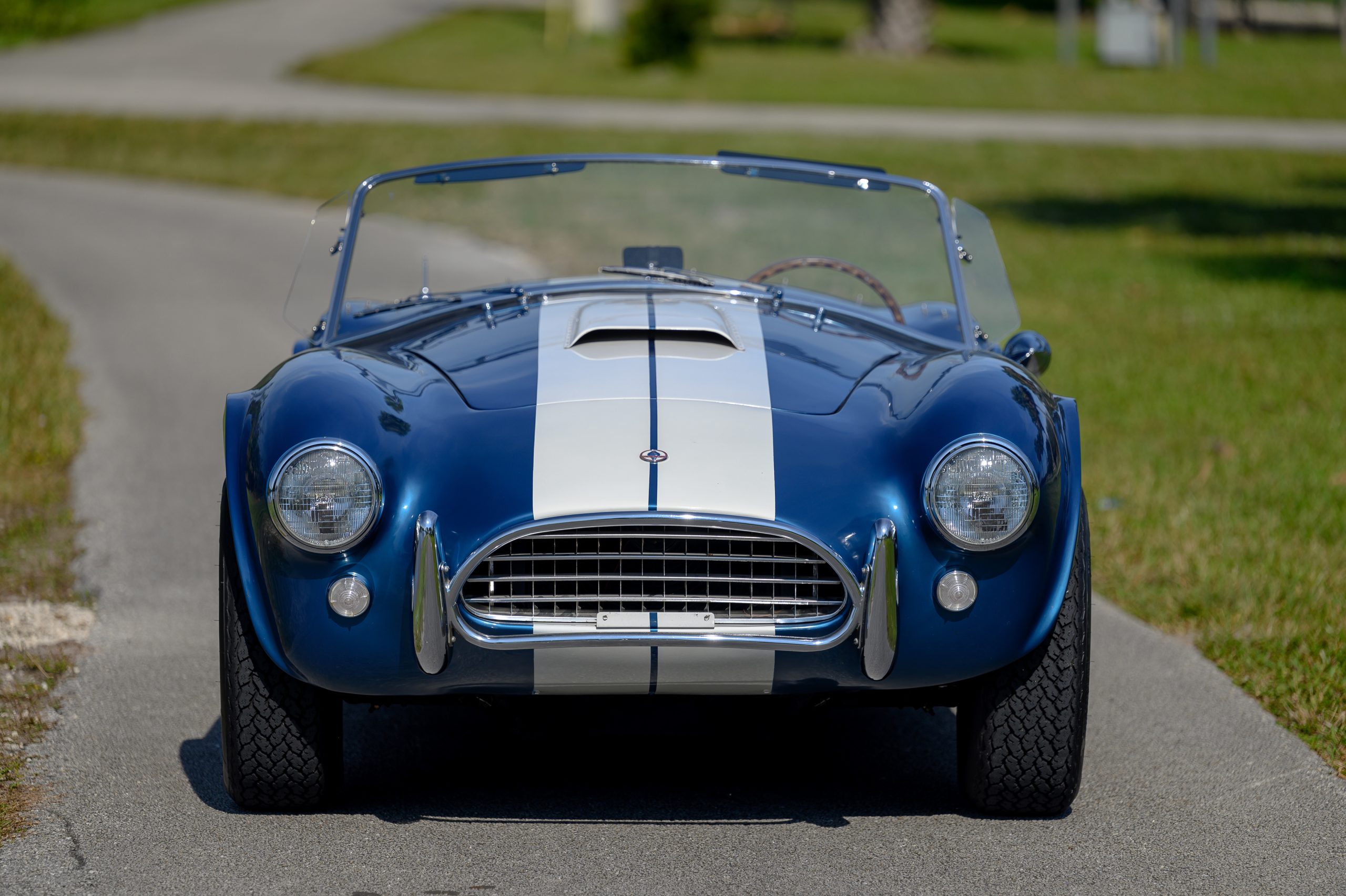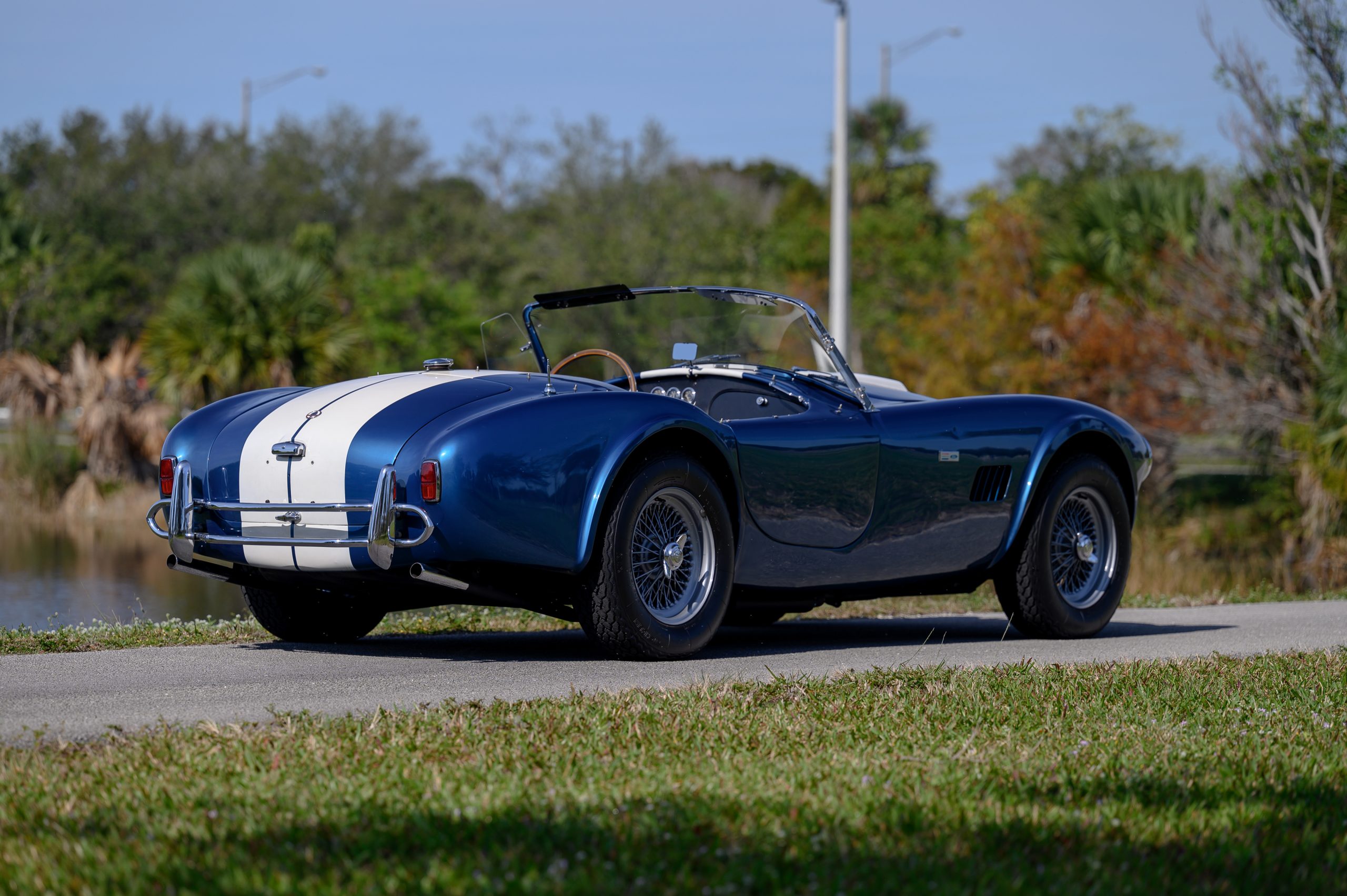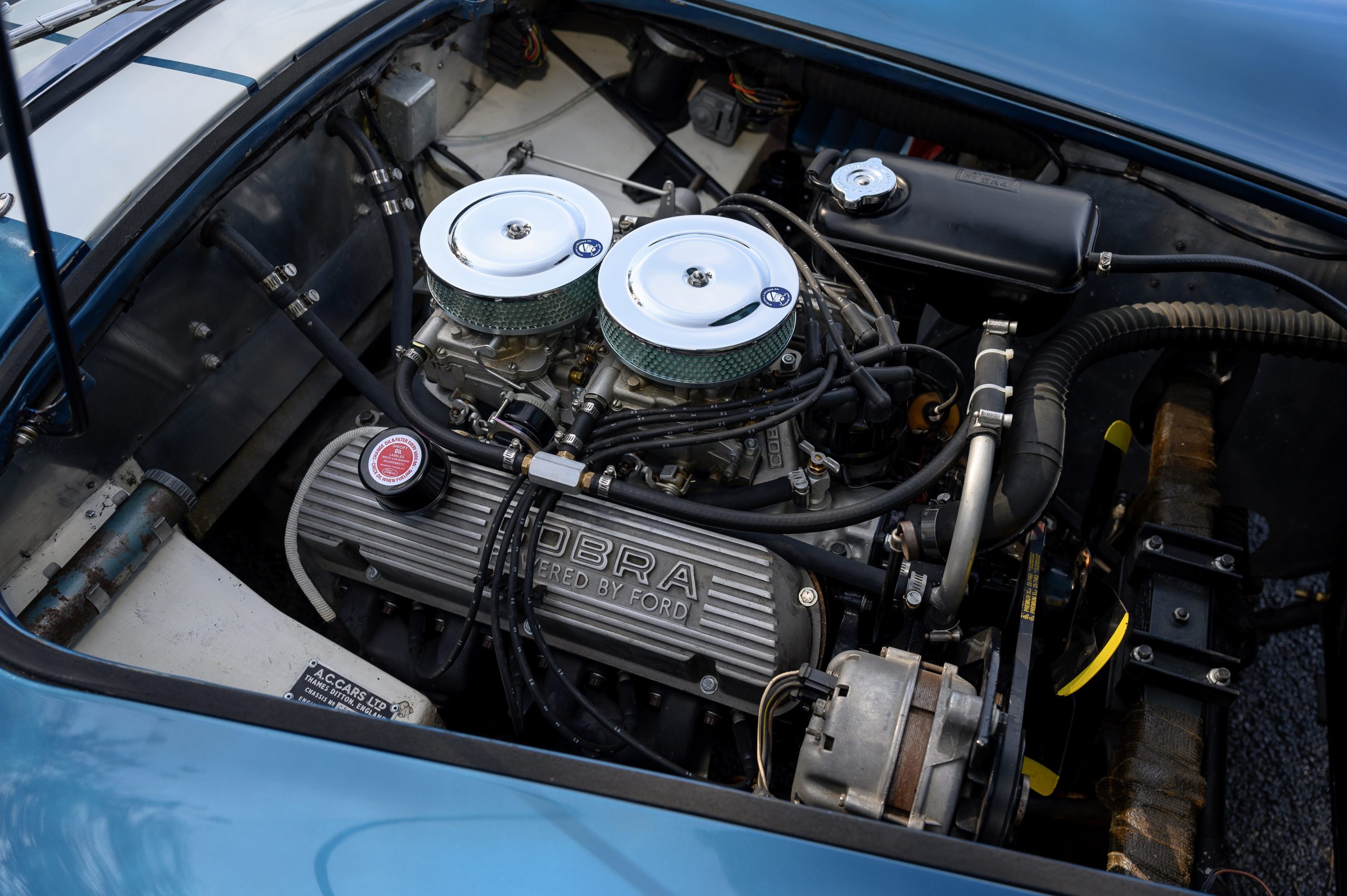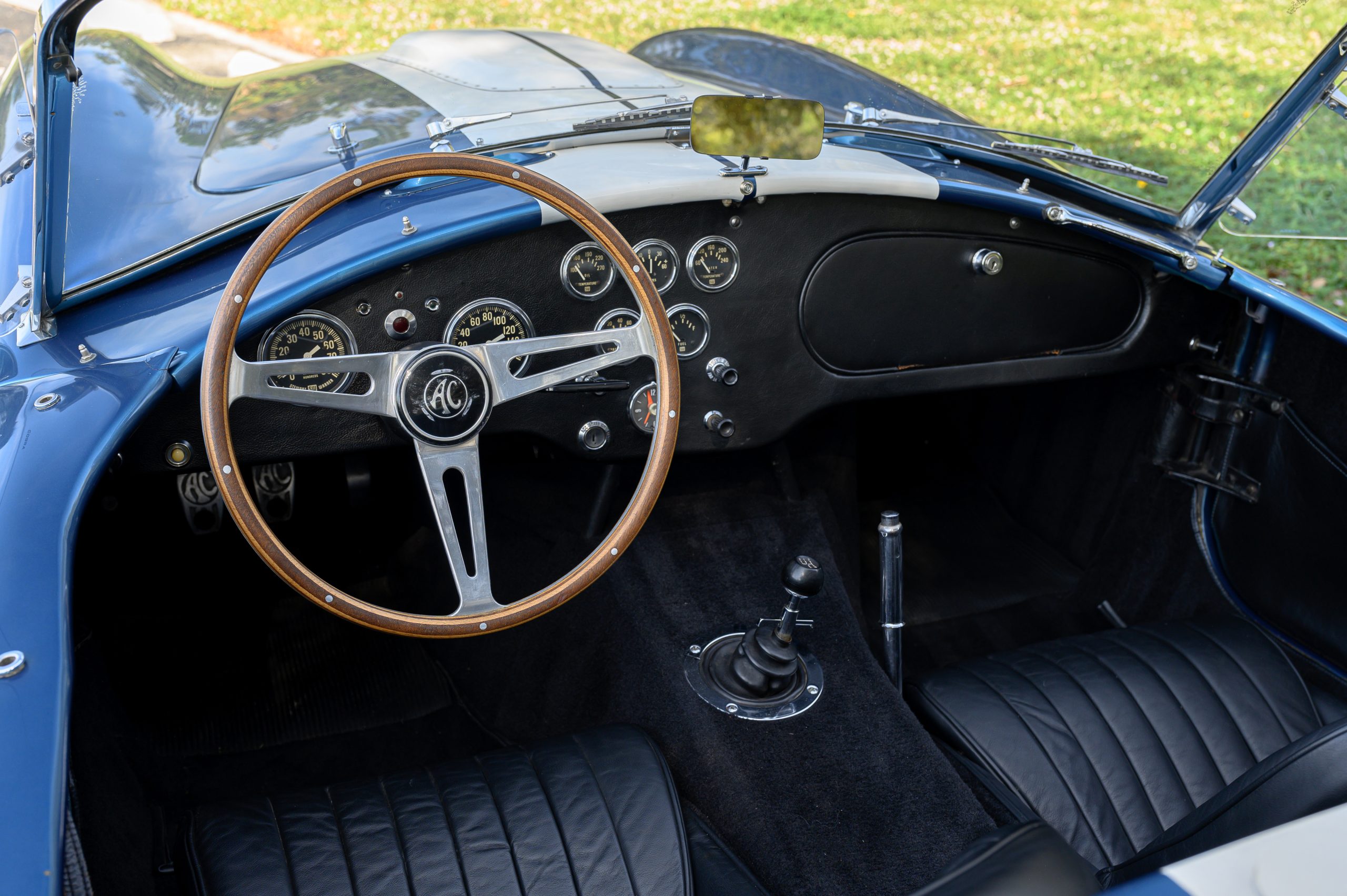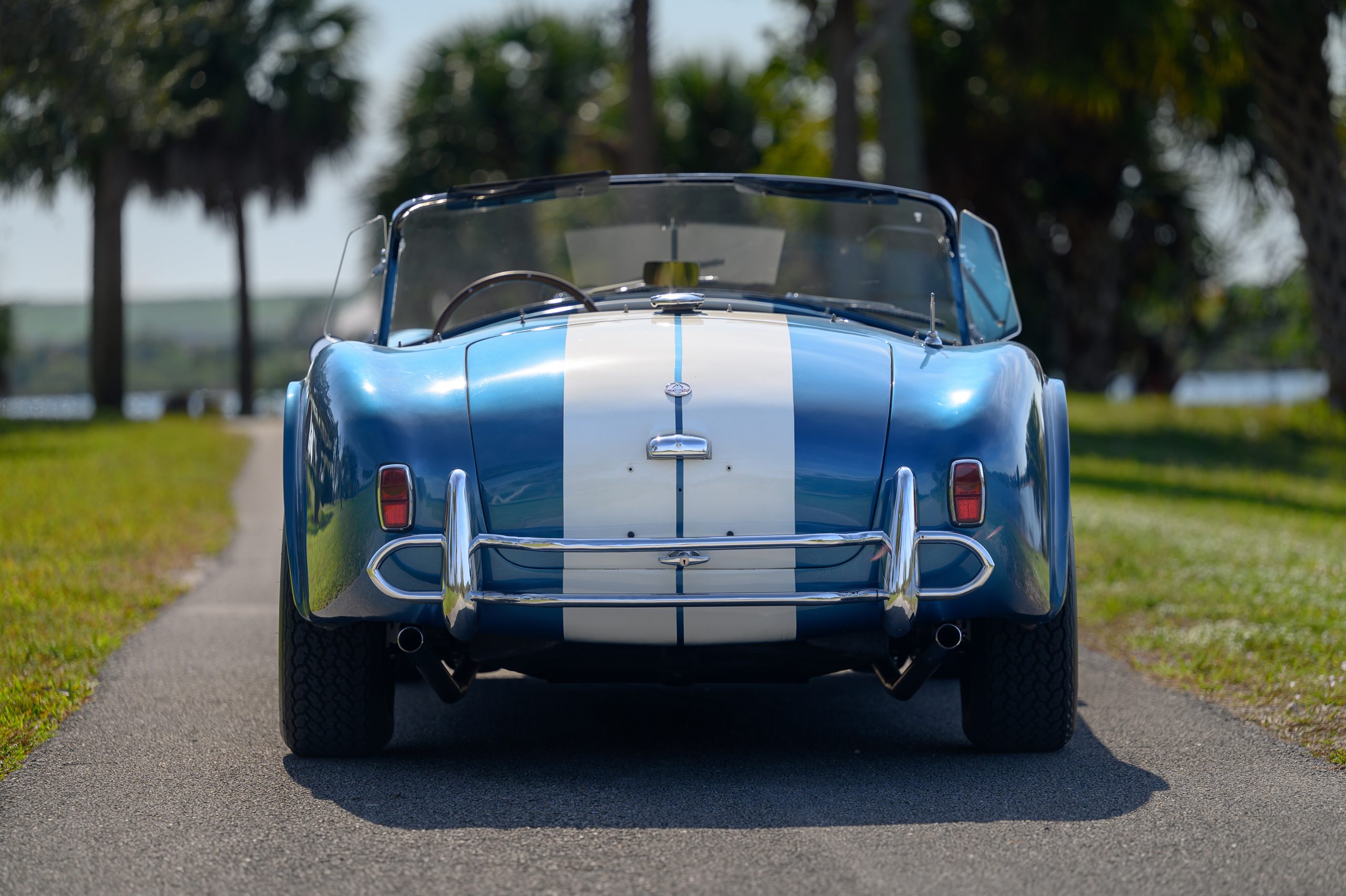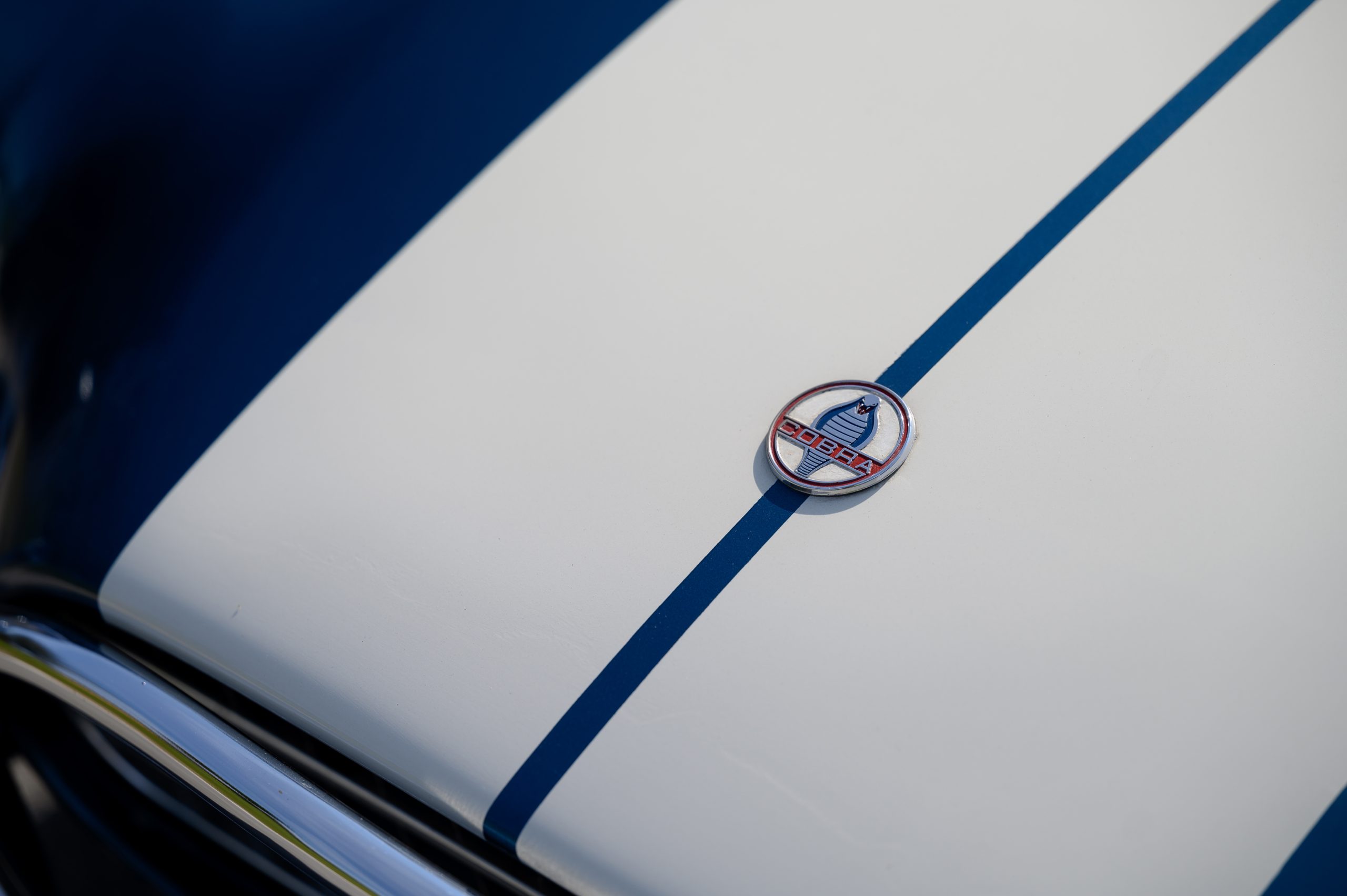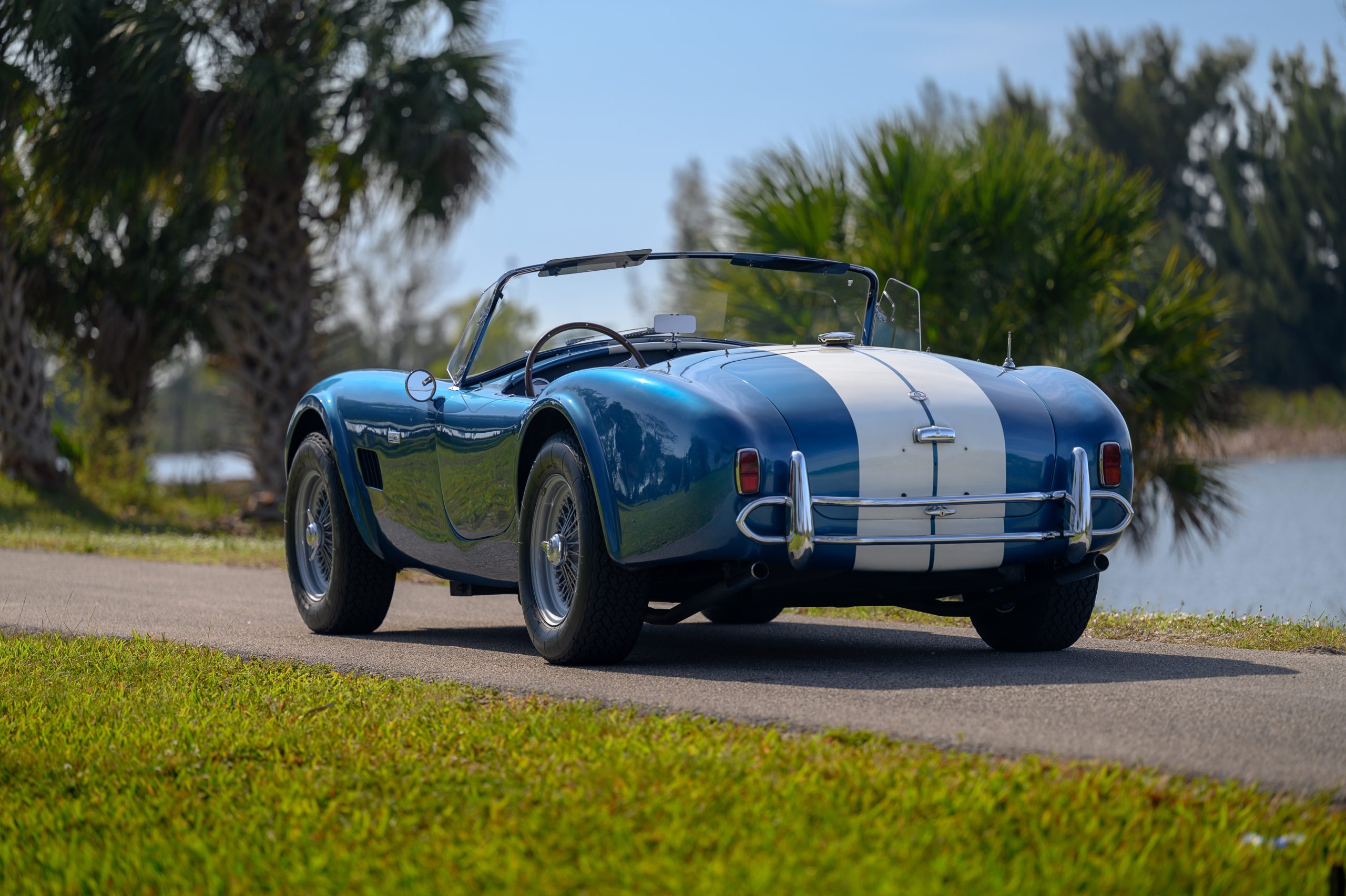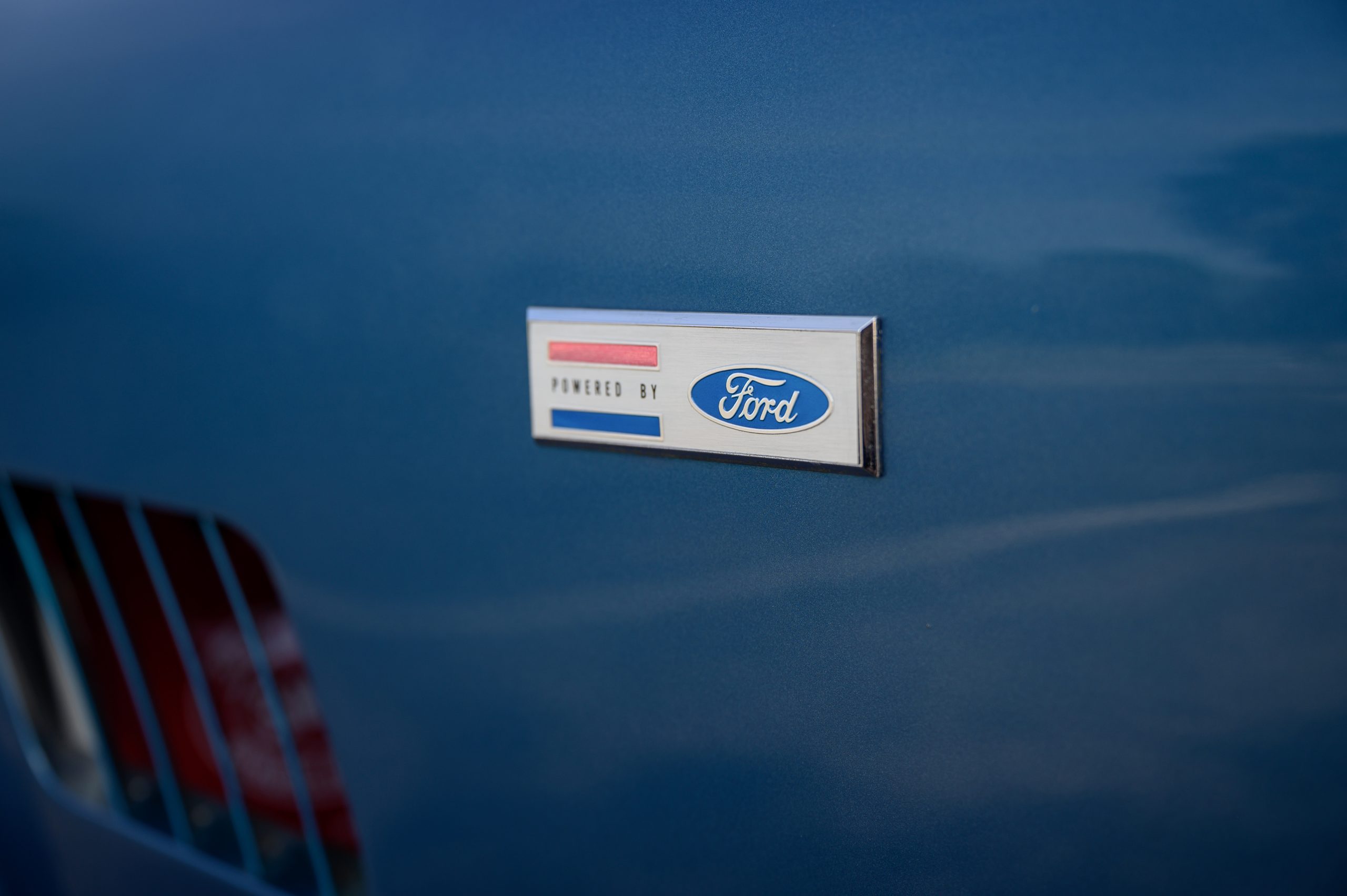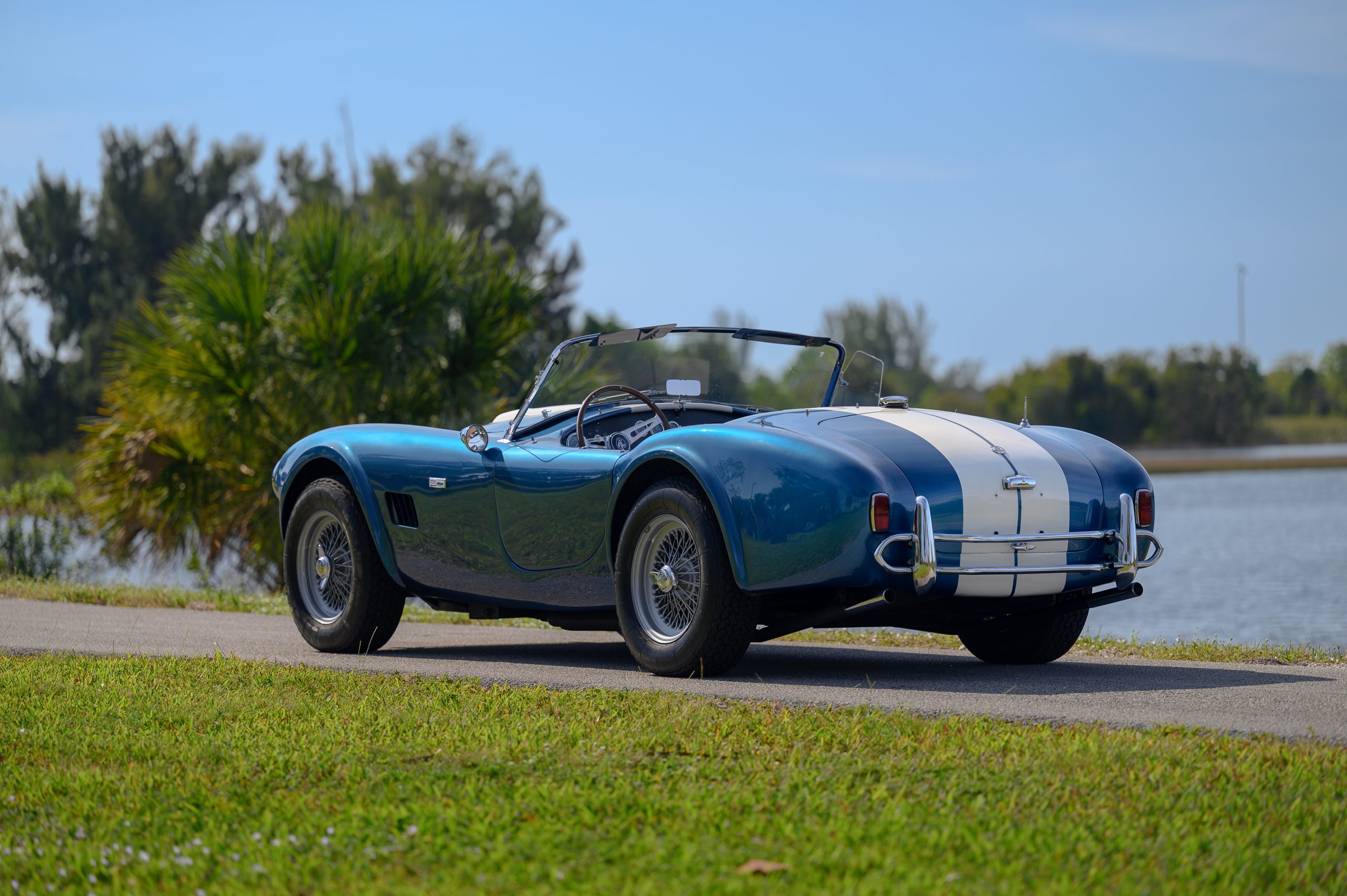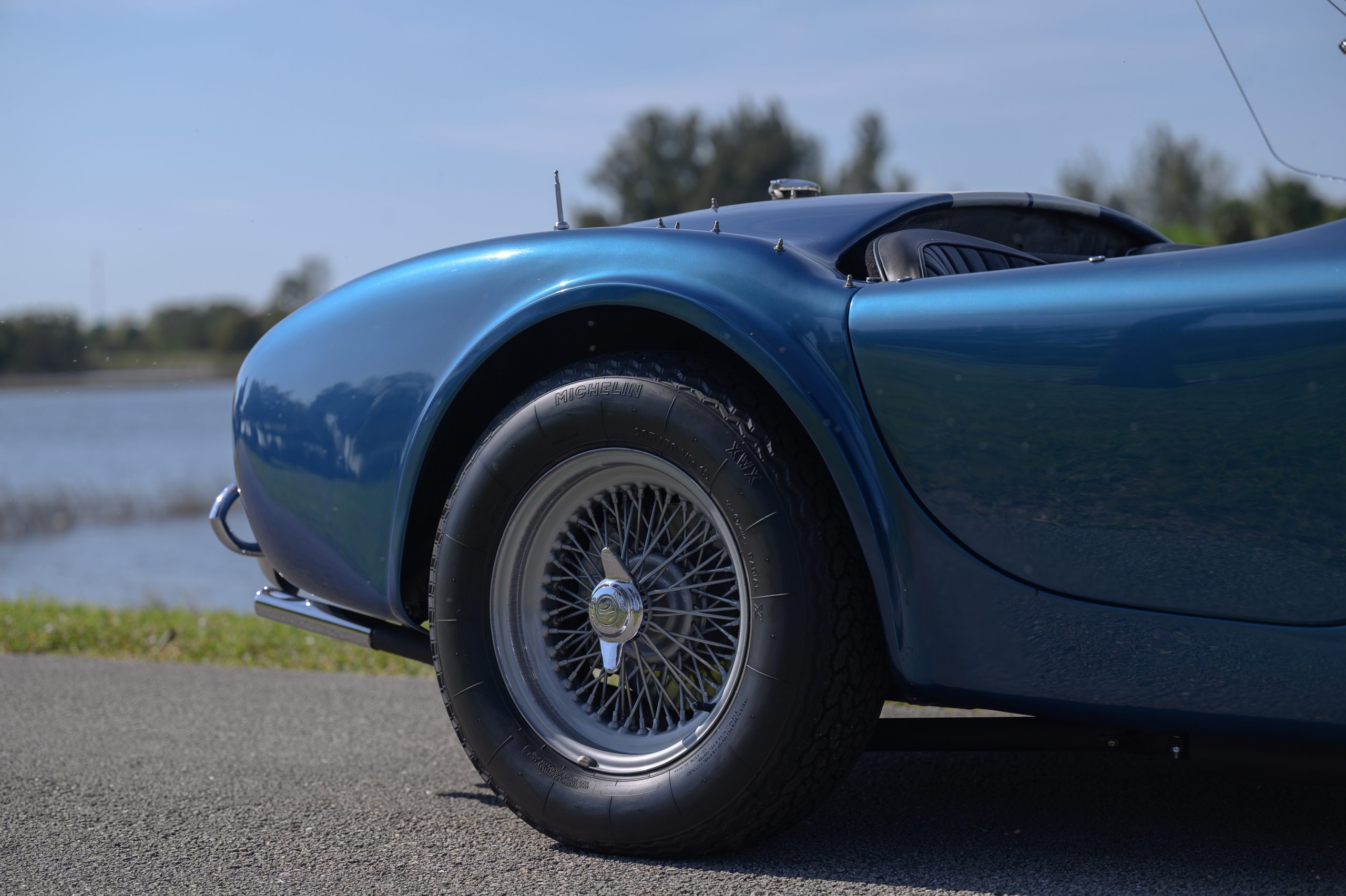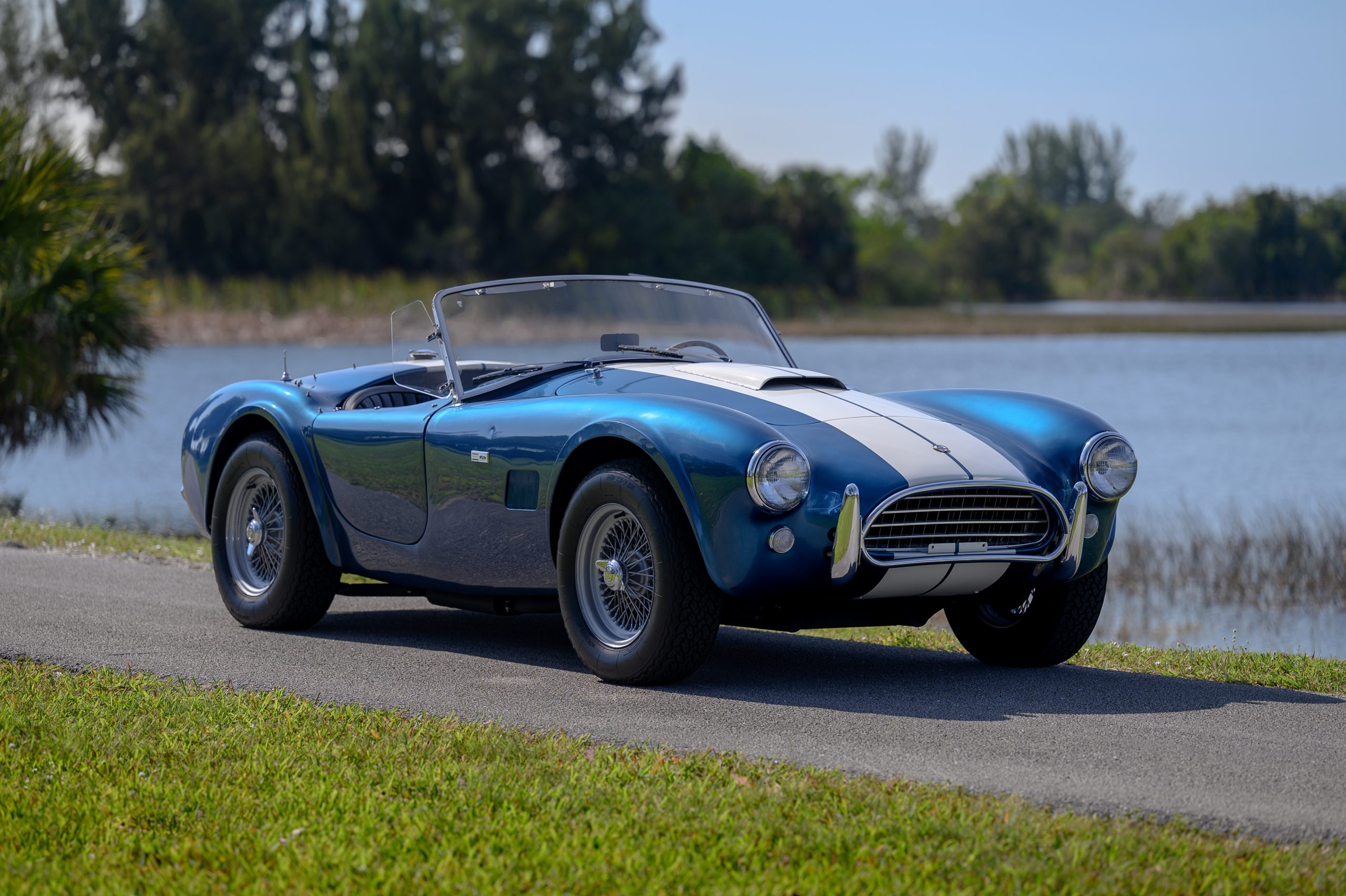With V8 power and open roadster coachwork, the 289 Cobra was truly a rogue of the roadway. Only the American Corvette served as the competition. By 1962, however, the new Corvette was shifting design to a more bladed and chiseled look.
The new Cobra, although an older design by British standards, became a purposeful and fresh look for Americans who wanted something more raw and powerful. Overnight, the performance legend built up, as racing victories mounted.
The Cobra too was very much like Carroll Shelby—brash and unapologetic with just a hint of refinement. When the Cobra was released, the most prominent British sports cars featured 4-cylinder engines and small, tidy coachwork. These cars largely served the more buttoned-up English sportsmen.
The Cobra featured a handmade body with a sinewy front fender line that undulated from the front to the rear of the car, but visually separated from the main hood and trunk. The new Jaguar E-Type was draped in a more uniformed design, combining unibody construction and partially enclosed wheels.
The stately Aston-Martin was upright and refined, but also more of a single body envelope. Though both of these cars used potent inline 6-cylinder engines, neither contained the raspy thumping American V8 engine.
Going 0-60 in the Cobra took an astonishing 4.9 seconds, besting both the Jaguar and Aston by two seconds. Even the production V8 Corvette was a full three seconds slower to 60. Although only 700 Cobras were built with the small block 260 and 289 engines, the low production numbers only added to the mystique and desirability of these cars.
Photos by Jasen Delgado courtesy of RM Sotheby’s






